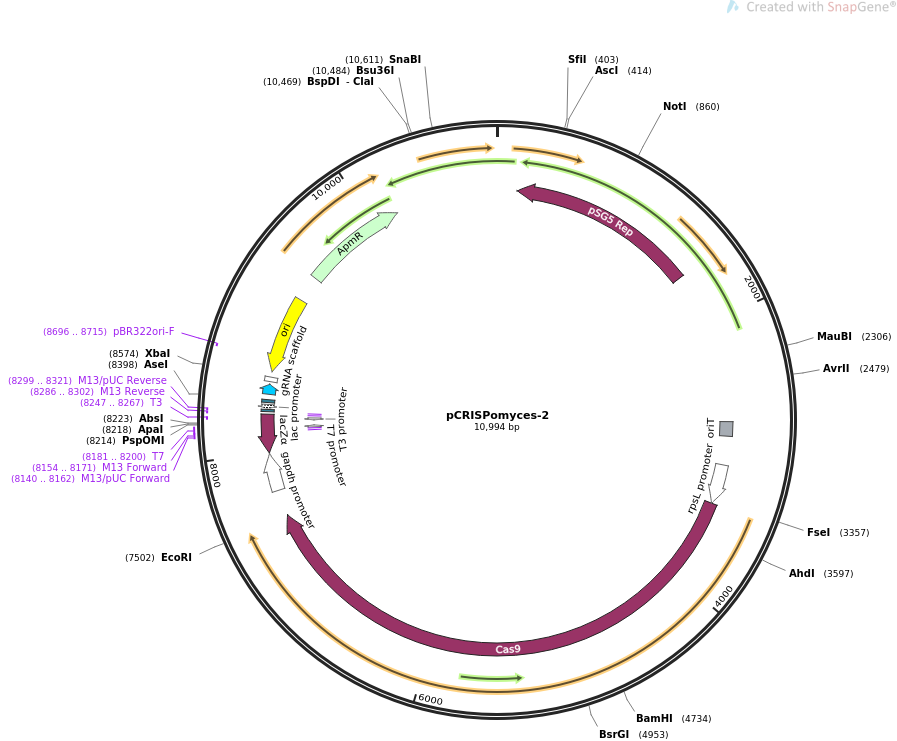PCRISPomyces-2
From ActinoBase
Use
This plasmid can be used for precise CRISPR/Cas9-mediated genome engineering of Streptomyces strains1. It is possible to introduce mutations that range from 1-100kbp deletions, precise single base codon changes to alter amino acids and insertions to add Flag-tags to proteins encoded at their native loci.
This plasmid has been successfully used for genome editing in the following organisms
- Streptomyces albidoflavus2
- Streptomyces coelicolor (unpulished mutagenesis performed within the group of Prof Matt Hutchings)
- Streptomyces formicae3
- Streptomyces lividans1
- Streptomyces venezuelae (unpulished mutagenesis performed within the group of Prof Matt Hutchings)
See here for the original pCRISPomyces2 paper from Cobb et. al1.
Click here for the CRISPR protocol used by Matt Hutchings lab (courtesy of Rebecca Devine) - or download the PDF.
Features
- Ampicillin resistance cassette
- Origin of conjugative transfer (oriT)
- Origin of replication for Escherichia coli (pBR322oriF)
- Codon optomised cas9 gene under the constitutive rpSL promoter
- LacZ cassette for golden gate cloning of guide RNA (gRNA)
- Constitutive gapdh promoter for gRNA expression
- pSG5 temparature sensitive Streptomyces origin of replication. Without selection and above 37°C the plasmid becomes unstable. This property is used to cure the plasmid from Streptomyces after successful mutagenesis.
- Xba1 site for gibson assembly of repair templates
History
The plasmid was made by Huimin Zhao's group and is available free from AddGene under MTA: click here
Map
Sequence links
AddGene under MTA: click here
References
- Cobb R.E., Wang, Y., Zhao, H. (2014). High-Efficiency Multiplex Genome Editing of Streptomyces Species Using an Engineered CRISPR/Cas System. ACS Synthetic Biology, 4(6), pp. 723-728. DOI: 10.1021/sb500351f
- McLean, T.C., Hoskisson, P.A., Seipke, R.F. (2016). Coordinate Regulation of Antimycin and Candicidin Biosynthesis. mSphere, 1(6), pp. e00305-e00316. DOI: 10.1128/mSphere.00305-16.
- Qin, Z., Munnoch, J.T., Devine R., Holmes, N.A., Seipke, R.F., Wilkinson, K.A., Wilkinson., Hutchings, M.H. (2017). Formicamycins, antibacterial polyketides produced by Streptomyces formicae isolated from African Tetraponera plant-ants. Chemical Science, 8, pp. 3218-3227. DOI: 10.1039/c6sc04265a
